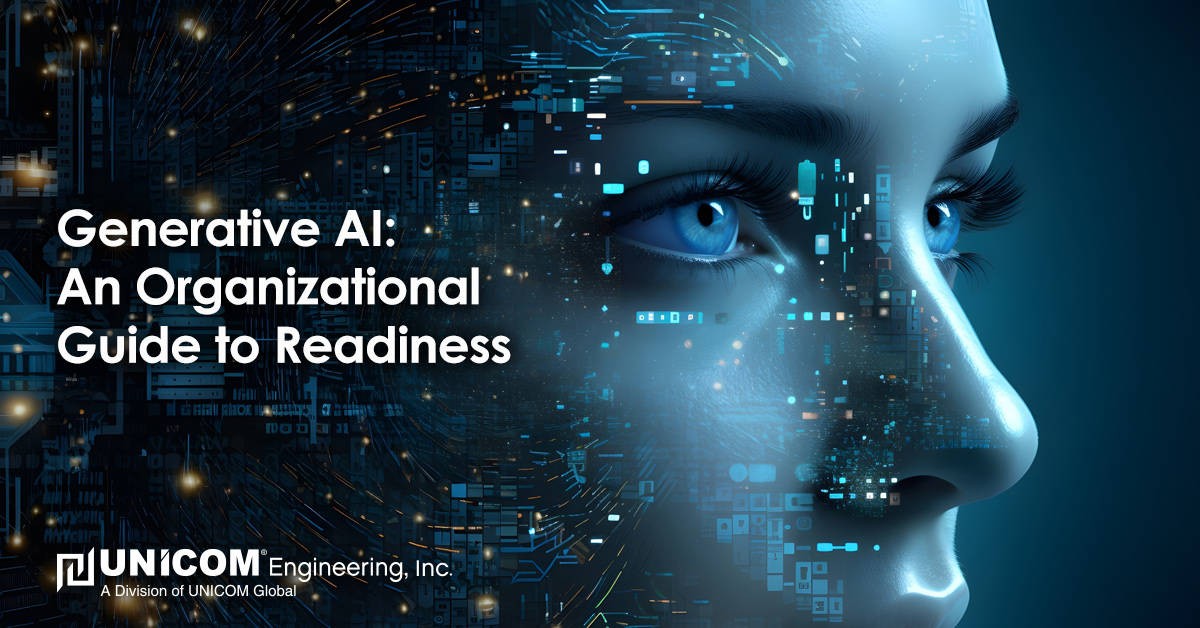Organizations across many industries are eager to harness the transformative power of Generative AI (GenAI). However, a comprehensive framework is essential to integrate GenAI into current operations successfully. Below, we explore six dimensions of readiness that guide organizations toward achieving the most with AI, addressing aspects like strategy, data management, AI models, technology platforms, skills development, and ongoing adaptation.
1. Strategy and Governance
Critical to GenAI readiness is aligning business and IT leaders to enable them to set clear, mutually beneficial objectives. In organizations with high GenAI readiness, strategy workshops are pivotal in establishing consensus, ensuring that all stakeholders contribute to shaping the organization's future. This collaborative approach helps to prioritize the best possible use cases that align with business priorities, a task often challenging due to the extensive reach of potential GenAI applications.
In addition, as stunning GenAI use cases may be, risks are ever-present. Effective governance is vital because it ensures compliance with regulations, risk management guidelines, and ethical considerations. These oversight mechanisms guarantee that organizations navigate the innovative potential of GenAI in a responsible way.
2. Data Management
A solid foundation for GenAI starts with effective data management. Organizations should prioritize scalable data management to provide timely, clean, and relevant data to GenAI models. Specifically, organizations need to coordinate data discovery, acquisition, and curation, giving business analysts access to an easily navigable catalog of enterprise data.
Organizations with high GenAI readiness employ data models to support structured and unstructured data, enforcing automated transformations and pipelines. As a result, they can ensure data quality, reduce errors and bias, and protect proprietary information. A high-readiness organization understands the pivotal role of data in the success of GenAI applications.
3. AI Models
Selecting the suitable model is crucial, given the many choices available. Organizations must match their chosen model to the specific use case, considering critical factors like user experience, fairness, privacy, and security. Techniques such as Retrieval Augmented Generation (RAG) and prompt engineering provide efficient alternatives, especially considering the resource-intensive nature of model training.
Continuous monitoring of model performance and regular tuning of parameters are essential practices in organizations with high GenAI readiness. Thus, evaluation for safety, fairness, accuracy, and compliance should become a standard part of the model lifecycle.
4. Platform Technology and Operations
Once use cases and models are selected, organizations need a trusted platform for implementation. Highly mature organizations deploy a GenAI technology stack that aligns with their use cases, security requirements, and data constraints. They standardize technologies across the organization and seamlessly prioritize use cases by integrating AI data from various sources.
Also, critical, scalable data management, facilitated by advanced analytics tools and architectures (i.e., Dell's data lakehouse), is integral to GenAI's success. A solid foundation in technology and operations ensures that GenAI applications run seamlessly within the organizational infrastructure.
5. People, Skills, and Organization
Beyond traditional AI skills, organizations with high GenAI readiness invest in training specialists on platforms, tools, architecture, and data engineering specific to generative AI. End users must know data analytics principles and practical AI prompt construction and should receive the ongoing support of dedicated GenAI operations teams.
Skills development is an ongoing process, reflecting the dynamic nature of the GenAI landscape. A high-GenAI readiness organization recognizes the importance of nurturing talent and building a workforce capable of embracing the evolving demands of generative AI.
6. Adoption and Adaptation
High GenAI readiness organizations clearly understand where and how generative AI can add value. Strategy sessions lay the groundwork, but integrating GenAI into new initiatives requires ongoing collaboration between business and IT.
Continuous improvement is embedded in the GenAI culture of high-redness organizations. They automate compliance with policies, data privacy, and government regulations and seamlessly integrate into development and deployment processes. In addition, they use human and automated feedback loops to capture valuable insights, ensuring that lessons learned contribute to refining models and enhancing GenAI capabilities.
Your Path to GenAI Readiness
Achieving high GenAI readiness is a dynamic journey that demands a strategic and holistic approach. Organizations must navigate the multifaceted dimensions of strategy, data management, AI models, platform technology, skills development, and ongoing adaptation to unlock the full potential of generative AI. By embracing a comprehensive framework, organizations can deploy GenAI efficiently and stay agile despite evolving AI landscapes, ensuring sustained innovation and competitiveness.
From exploration to full deployment, no matter where your organization is in its generative AI journey, UNICOM Engineering can help with hands-on expertise in designing and building the latest hardware.
As an Intel Technology Provider and Dell Technologies OEM Partner, they can supply, build, and support the best hardware to meet or exceed the needs of your application and help you bring it to market faster.
Schedule a consultation today to learn how UNICOM Engineering can keep you moving forward.
